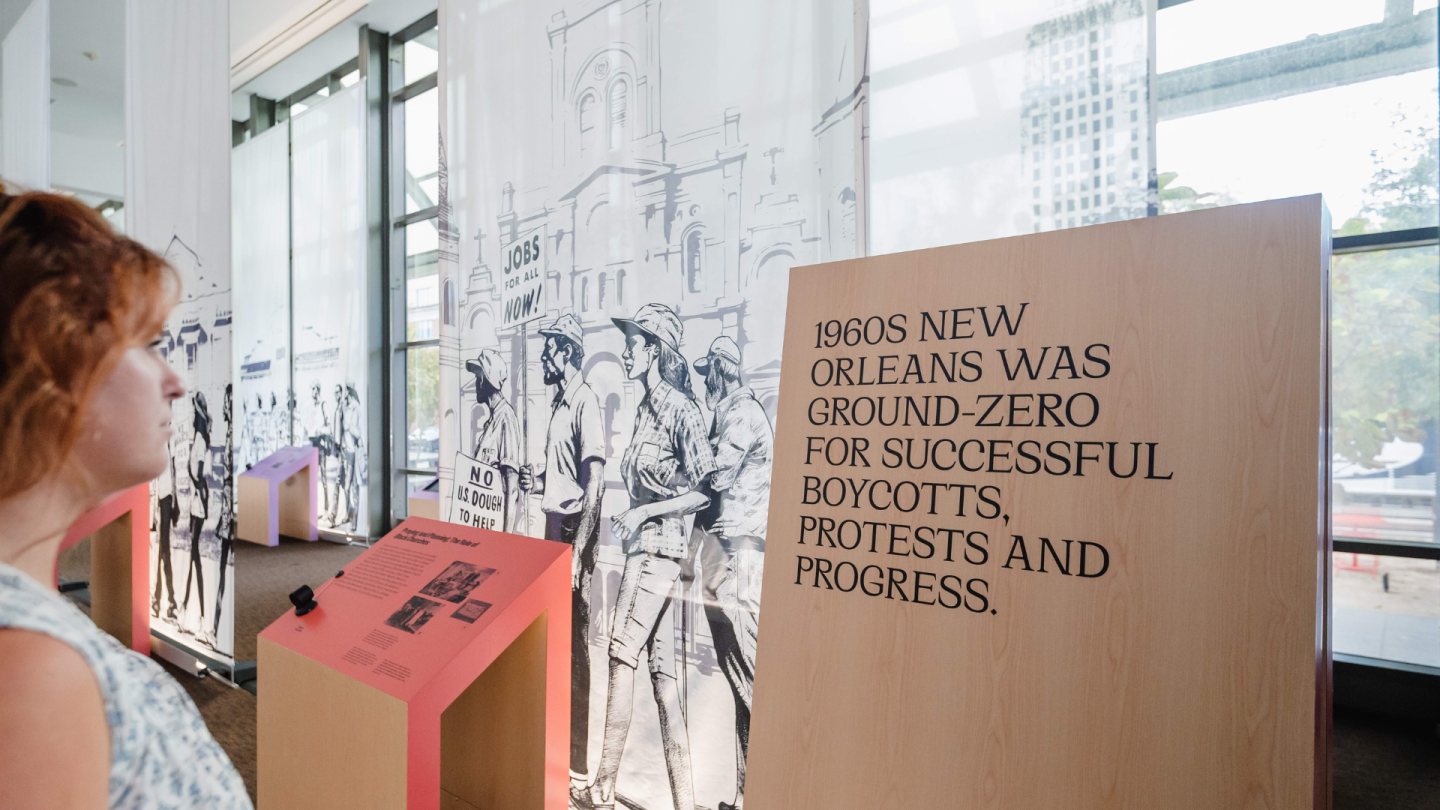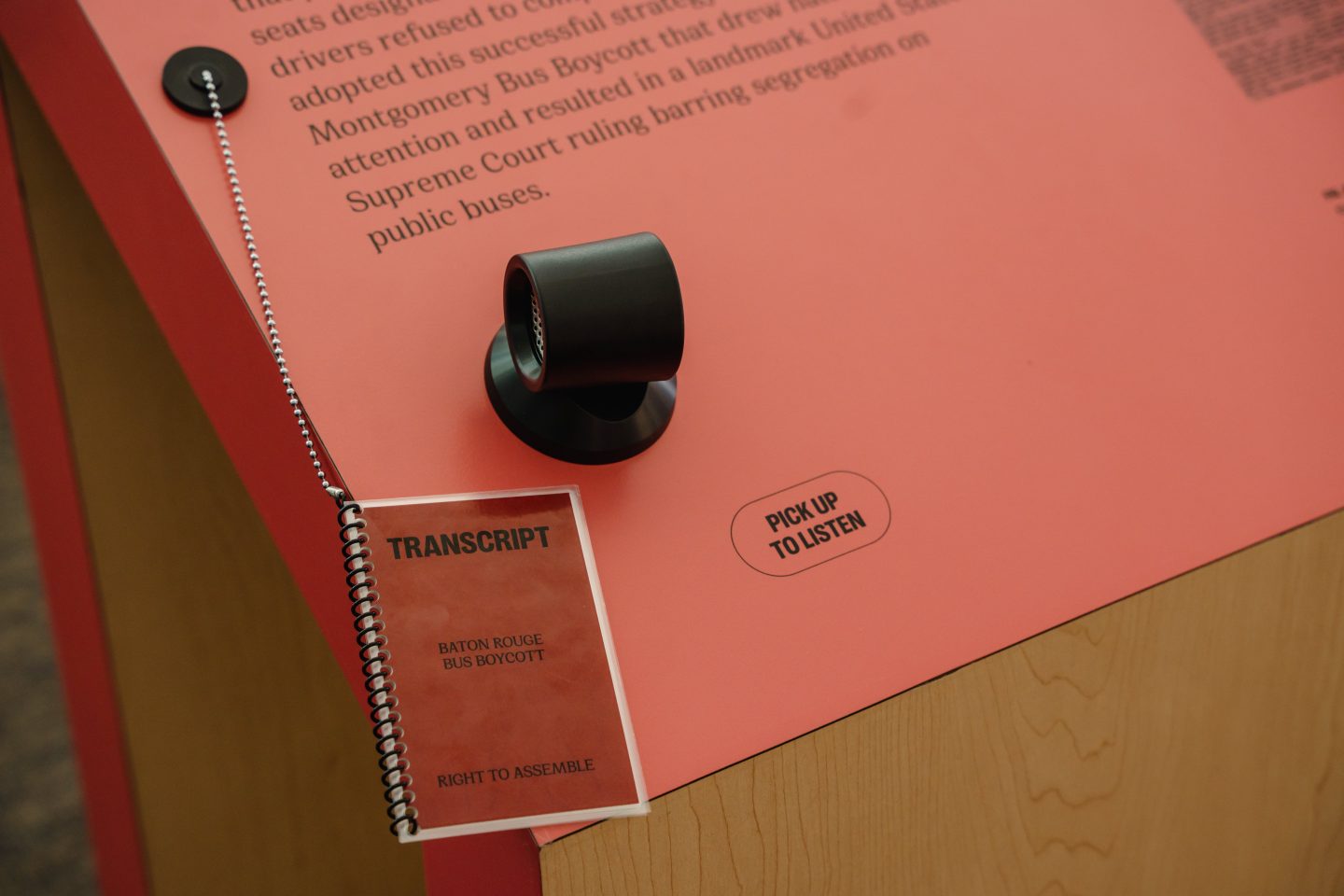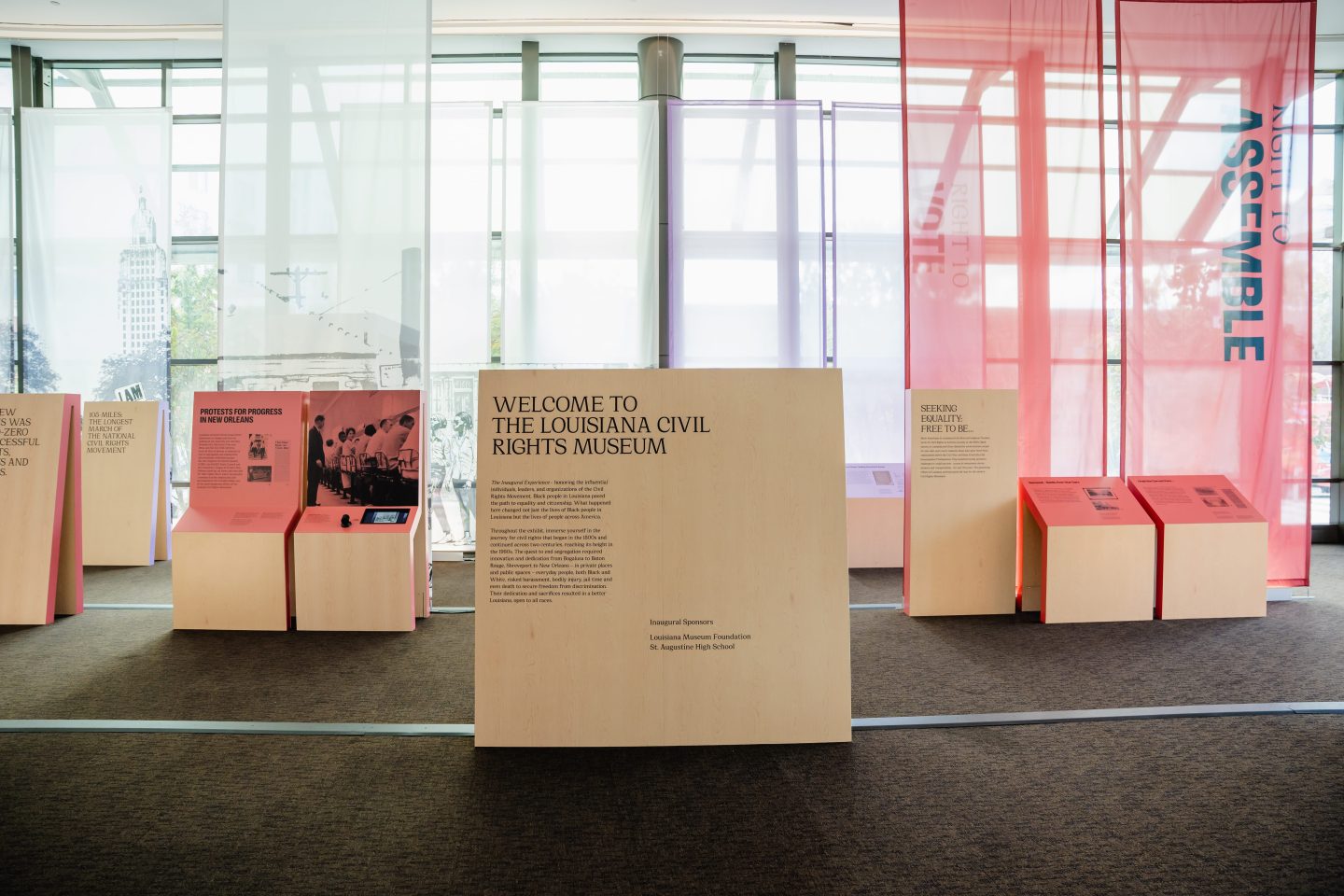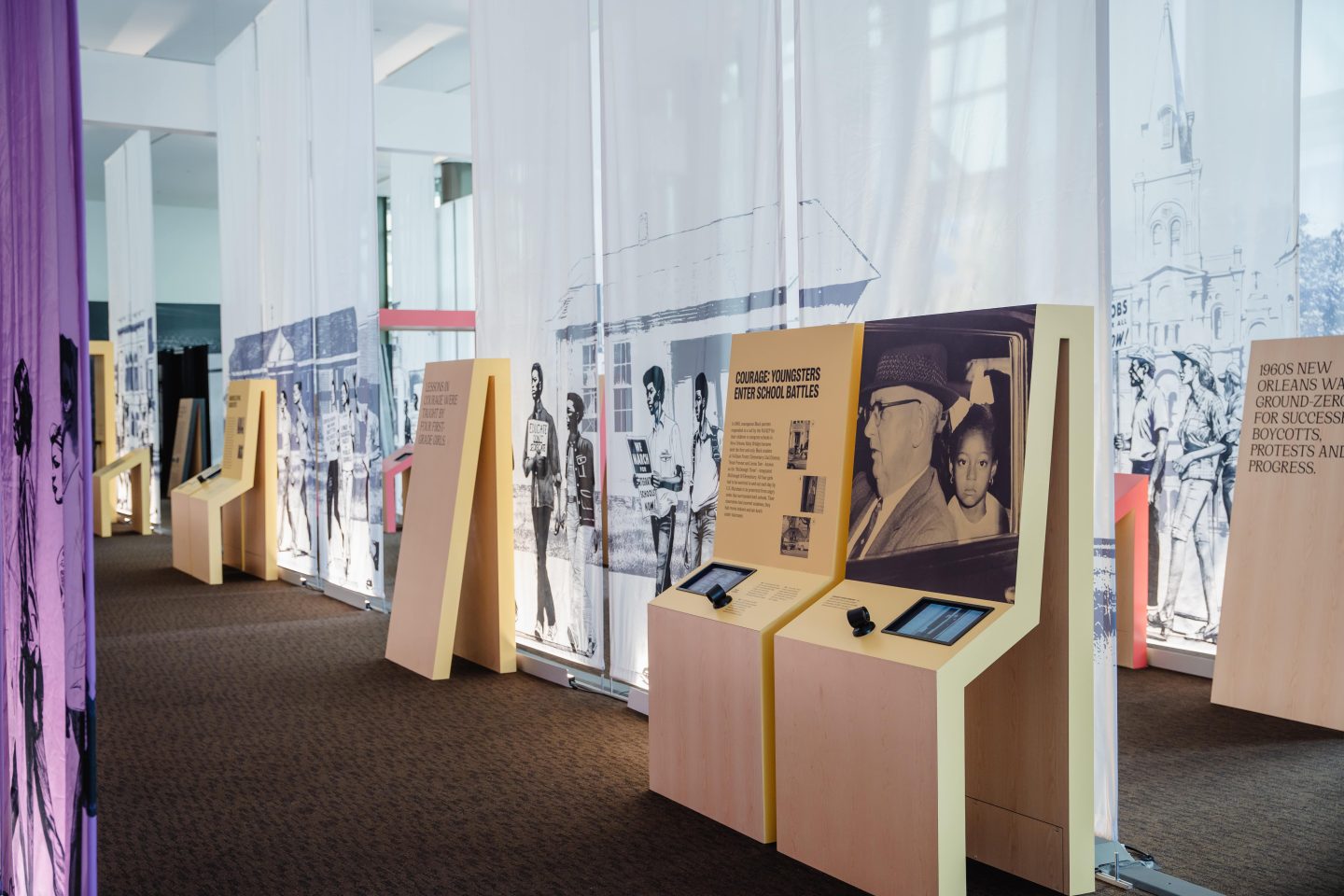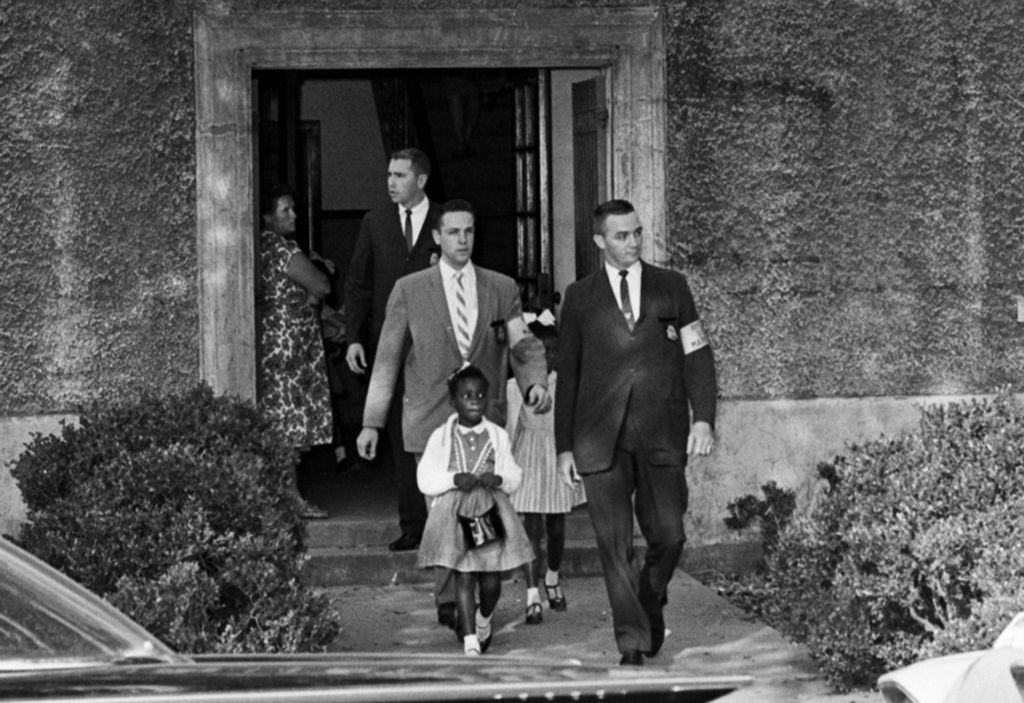Sharing Louisiana’s Unique Place in Civil Rights History
The Louisiana Civil Rights Museum's inaugural exhibition explores the state's most important civil rights sites and events through three lenses: the right to assemble, the right to education, and the right to vote.
Overview
In 2021, after listening sessions with communities across Louisiana, the Louisiana Civil Rights Trail was launched with 14 markers at historic sites across the state. We were asked to tackle the second phase in this effort by bringing Louisiana’s role in the Civil Rights Movement to life at the Morial Convention Center in New Orleans.
Designed by Local Projects, this exhibition explores the state's most important civil rights moments through the lens of the right to assemble, vote, and receive an education. In this way, local stories serve as meaningful and compelling entry points to national narratives and exploration of the broader Civil Rights Movement.
Partners
Solomon Group, The Artery, Antfood, GCM Advertising
Services
Exhibit Design, Media Design, Media & Software Development
“Much of what happened during the Civil Rights movement started right here in Louisiana. The Louisiana Civil Rights Museum is part of our continued effort to educate visitors about the real-life activists who strategized, organized, preached, marched, stood up, sat down, and sang for change, all in one place. The museum serves as a way to learn about the past.”
The Details
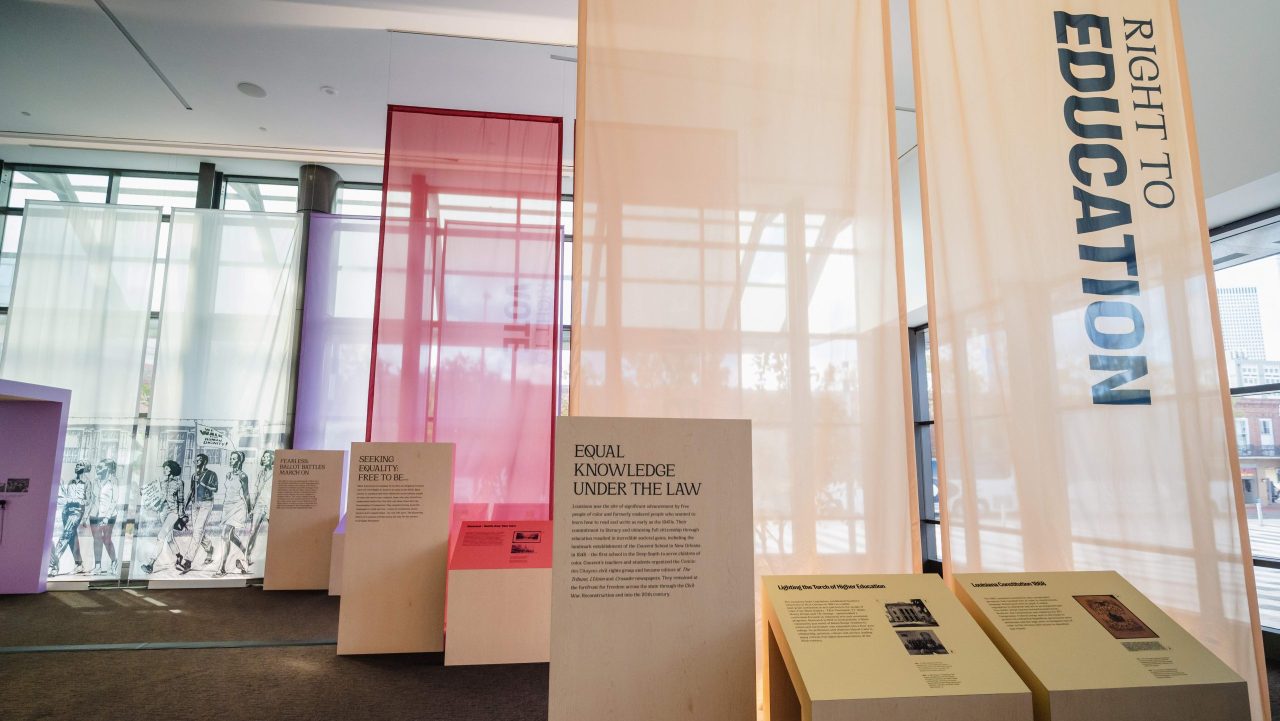
Pathways to Freedom
Our design is inspired by the Civil Rights Trail and, more generally, marches as a form of activism. Visitors follow three Civil Rights “pathways” through the space that reveal how a particular right was denied. As visitors “march” down these pathways, they discover how activism, protests, legal battles, and demonstrations of all kinds led to collective triumphs, culminating in an immersive interactive that recreates the march from Bogalusa to Baton Rouge, and the opening of the first desegregated elementary school.
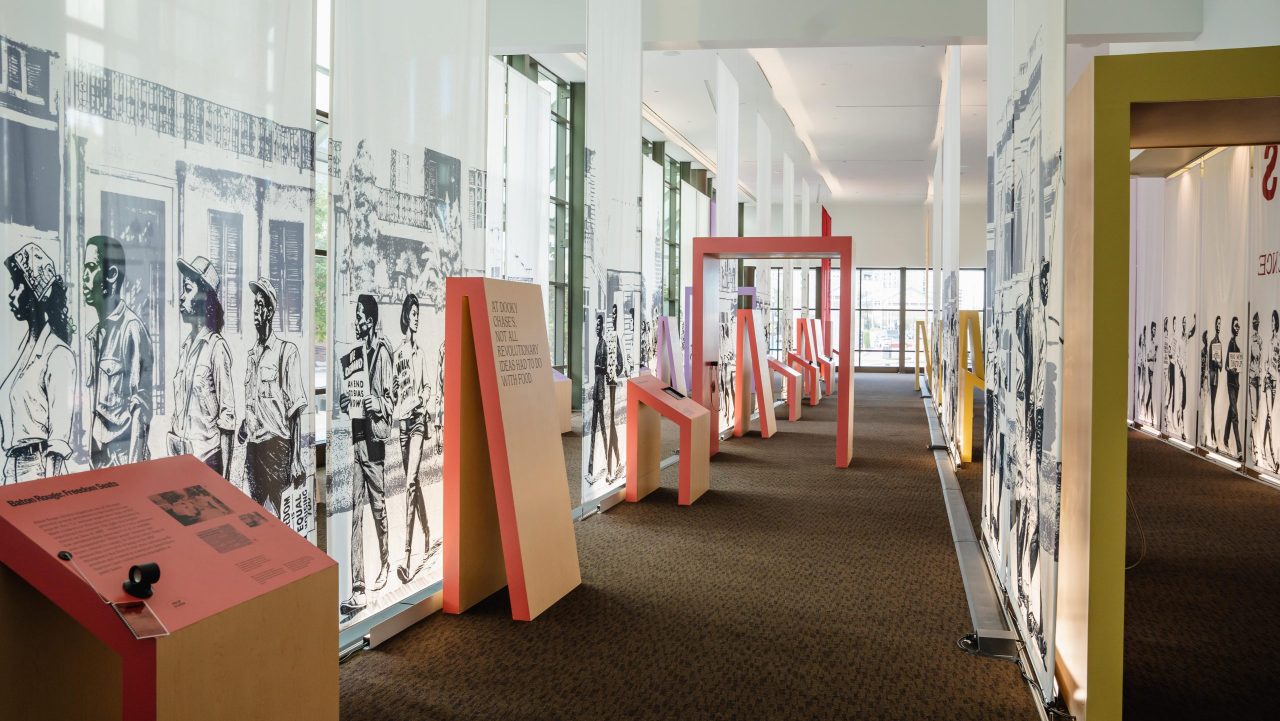
Stories focus on lived experience, and highlight the intersections of law, race, and multiculturalism that make Louisiana’s history so unique, while also revealing their reverberations across the nation.
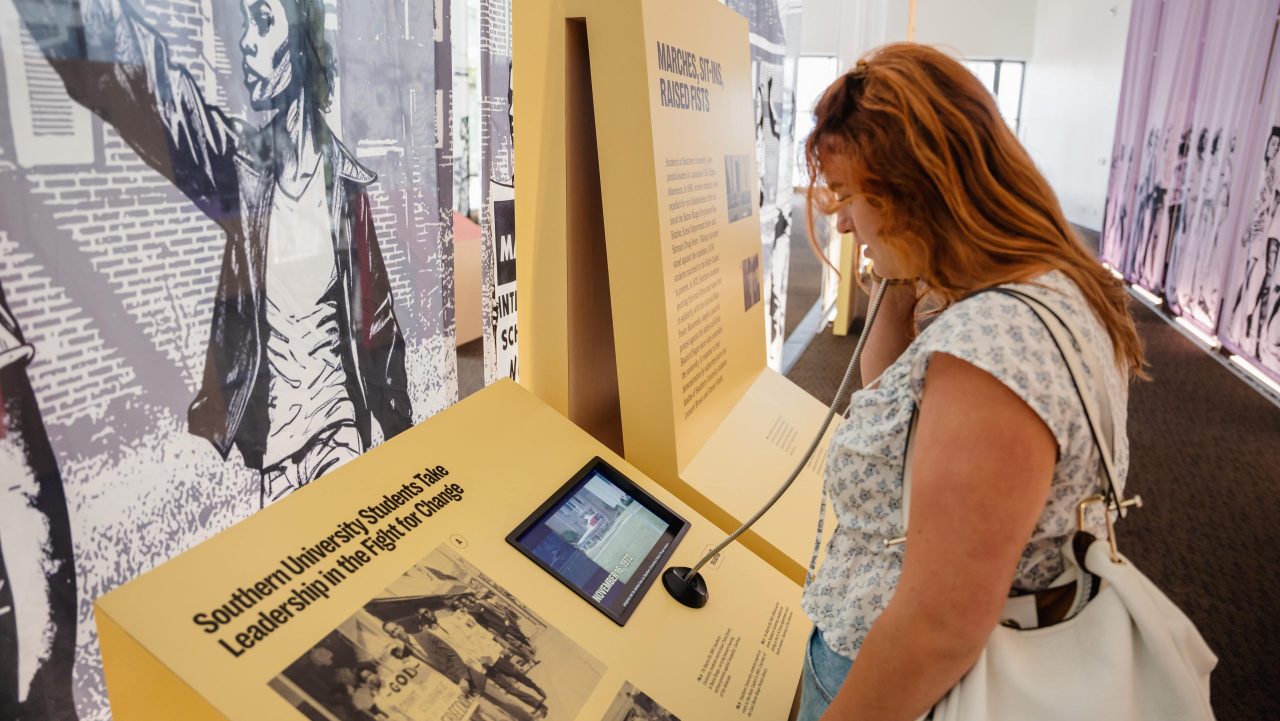
Storytelling Modules
Each pathway is intentionally interrupted by modules - physical structures that carry engaging and relevant civil rights stories - to evoke the obstacles faced by the movement.
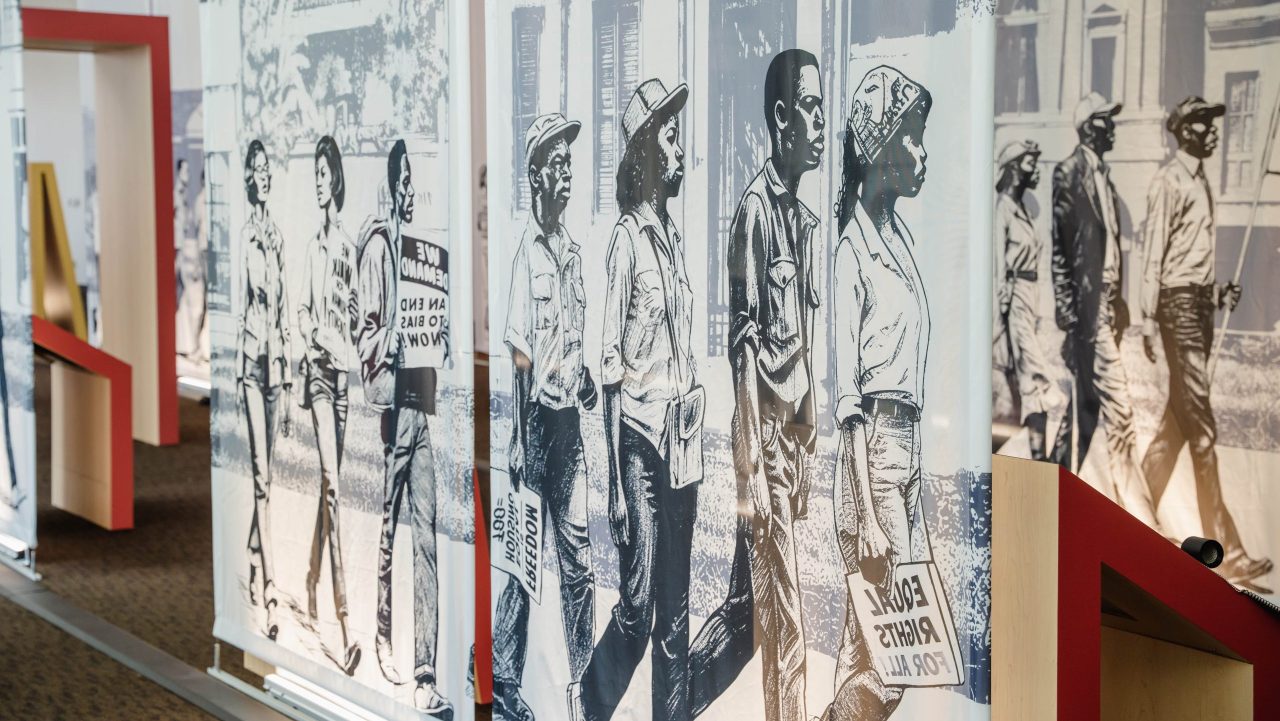
Recreating the Atmosphere of a Movement
Scrims provide an atmospheric backdrop between the pathways, giving the visitors the sense of moving among crowds of protestors and providing a large-scale canvas for iconic story images.
Openings between the pathways also allow visitors to move across from one to another at key moments where the stories connect and build on each other.
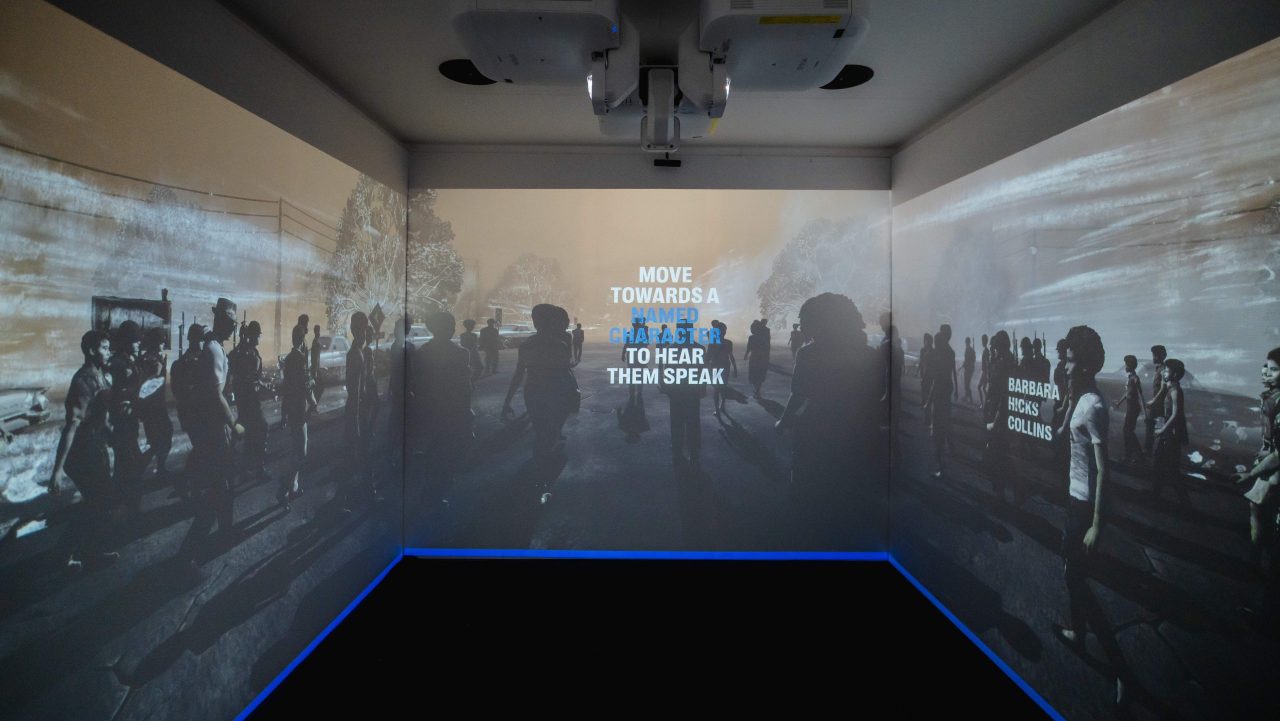
March with Protestors, Enter the First Desegregated School with Pioneers
The exhibition concludes with a dramatic interactive installation built for the DreamCube, an immersive environment created by Local Projects that uses projection mapping and motion detection. The interactive brings historical photos of pivotal events to life as memory spaces, prompting visitors to move towards historic characters in the scene and hear their moving and powerful recollections through audio narration. Visitors walk alongside activities during the longest civil rights march, and join the first Black students to enter desegregated elementary schools amidst fierce protest and disapproval.
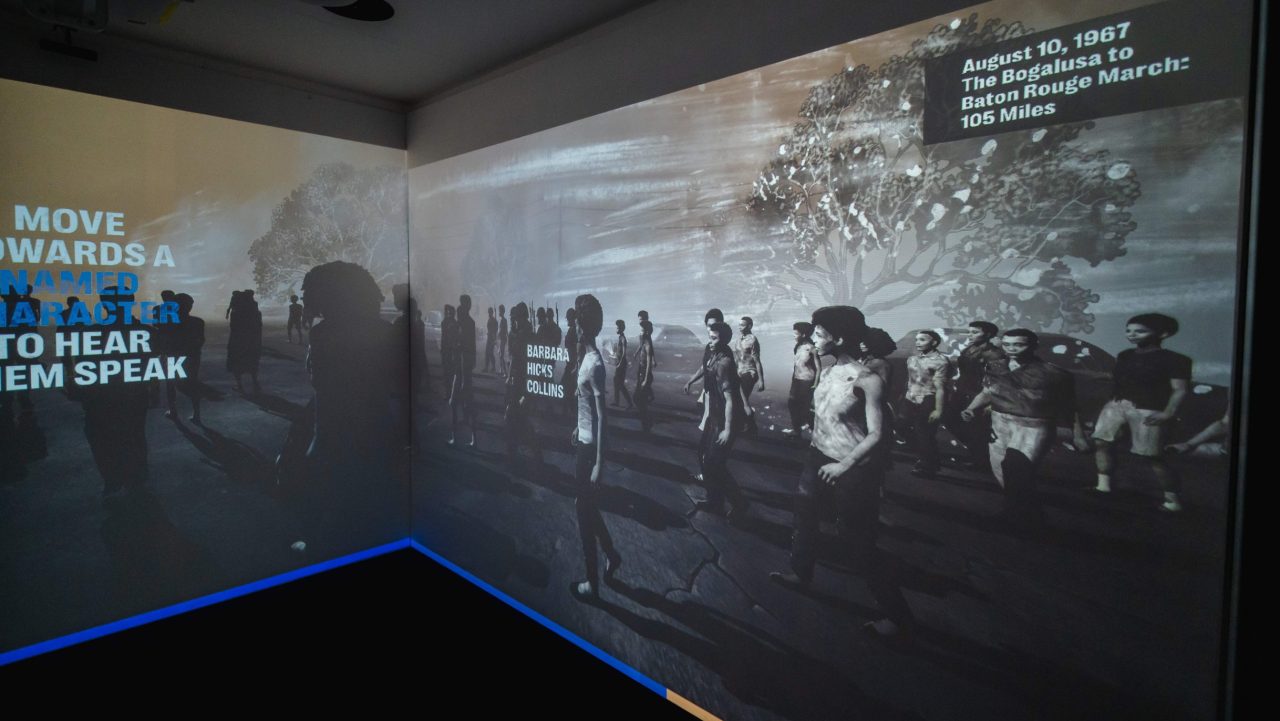
The space evokes the feeling memory brush stroke textures, atmospheric use of light and shadows, and the blending of historic imagery with evocative animations and visual artistry.
“With the DreamCube, we had the opportunity to create something that has never been done. Placing visitors at the center of these historic events, evoking emotion and sense of place through sound, interactive visuals, and firsthand recollections: it really changes the way you hear and think about the stories. It helps you imagine what it was like to be there and be part of something bigger than yourself.”
